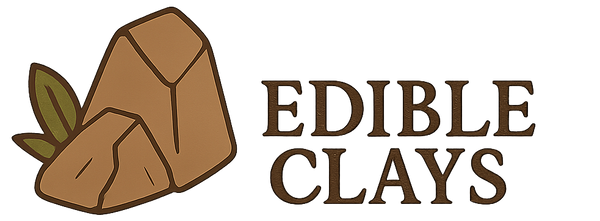
Edible Clay – Discover the Ancient Goodness of Red Clay Edible
Share
A Natural Tradition Making a Modern Comeback
Across continents, people are turning back to nature for simple, earth-based wellness practices. Among these, red clay edible is earning attention in the USA, UK, and India. For centuries, communities have valued edible clay as a way to balance the body, support digestion, and feel refreshed — long before the term “detox” became popular.
But what exactly is red clay? Why is it consumed? And how do you use it safely today? Let’s take a deep dive.
1. What Exactly Is Red Clay Edible?
Red clay is a naturally occurring earth rich in iron oxide, which gives it its warm, earthy color. When carefully cleaned and processed for human use, it becomes edible clay — a product consumed in small amounts for its natural properties.
Historically, eating clay (known as geophagy) wasn’t unusual. In rural India, Africa, and parts of the Middle East, people ate certain types of earth during seasonal changes or fasting periods. Even in Europe and North America, there are records of edible clays used as folk remedies.
Today, red clay edible is packaged in chunks or powder, ensuring consistent quality and safer consumption compared to raw sources.
2. Why Do People Eat Red Clay?
A. Natural Digestive Cleanser
Red clay’s microscopic particles can bind with unwanted substances in the digestive system. Many people use it occasionally to help flush out impurities or to soothe acidity and bloating.
B. Gentle Mineral Support
Because it contains naturally occurring iron, calcium, and magnesium, red clay can provide trace minerals. It is not a replacement for a healthy diet, but it can complement it in small amounts.
C. Cultural and Traditional Use
In India, edible clays have long been part of folk traditions — often consumed during monsoon season or pregnancy cravings (though modern doctors now advise caution). In the USA and UK, health enthusiasts seek it out as an “earth-grown” detox option, usually purchased online from trusted brands.
3. How to Use Red Clay Edible Safely
While red clay edible is natural, “natural” does not always mean “consume freely.” Responsible use is key:
- Choose food-grade clay only. Avoid raw or untested sources.
- Start small. A tiny pinch of powder or a small piece is enough.
- Drink plenty of water to prevent constipation.
- Avoid daily long-term use — edible clay is best for occasional consumption.
- Consult a doctor if you’re pregnant, nursing, or have any health condition such as anemia or digestive disorders.
- Stop immediately if you feel unwell after eating clay.
High-quality suppliers often test their clay to ensure it meets safety standards and is free from harmful levels of heavy metals.
4. Red Clay Edible Around the World
United States
In the US, red clay edible is marketed as a detox product. Some packages carry California Proposition 65 warnings due to trace amounts of naturally occurring elements. These warnings don’t necessarily mean the product is unsafe, but they help consumers make informed decisions.
United Kingdom
In the UK, edible clay is usually sold online, often alongside herbal and natural health products. Buyers are becoming more aware of choosing lab-tested, packaged clay instead of sourcing it from unverified sellers.
India
In India, edible clays such as “mitti” or “khadi mitti” are traditionally used in rural communities. Today, online platforms make purified, food-grade red clay available nationwide, giving urban buyers access to authentic products without contamination risks.
5. Practical Tips for Using Red Clay Edible
- If using powder: Mix a pinch into clean drinking water, stir, and sip slowly.
- If using chunks: Break off a small piece and allow it to dissolve in the mouth rather than chewing hard pieces.
- Use sparingly: Once or twice a week is more than enough for most people.
- Combine with a balanced diet: Edible clay is not a meal substitute — think of it as a natural supplement used occasionally.
6. Why “Red Clay Edible” Is an Important Search Term
If you’re looking to buy or learn about red clay edible, this exact phrase is what people search for on Google in USA, UK, and India. High-quality content using this keyword helps connect curious buyers to trusted information.
For businesses:
- Use “red clay edible” in headings and product descriptions.
- Add geo-specific phrases like “red clay edible in USA”, “authentic edible clay in India”, or “buy edible clay in UK”.
- Avoid keyword stuffing — keep content natural and informative.
7. A Natural Tradition for Modern Times
Whether it’s a villager in India following ancestral practices, a wellness shopper in the US searching for natural detox solutions, or a UK buyer curious about earth-based supplements, red clay edible connects people to an ancient tradition of using nature for balance and wellness.
Unlike synthetic detox products, red clay has roots in real history. But unlike raw, unprocessed clay, today’s packaged versions are purified for safer consumption — provided you choose reliable sources like Edible Clay.
Conclusion: Red Clay Edible — Pure, Simple, and Time-Tested
The renewed interest in red clay edible shows how modern wellness often comes full circle to ancient practices. Rich in minerals and valued for its natural cleansing ability, it’s a simple way to reconnect with nature — as long as you use it wisely and sparingly.
If you’re in the USA, UK, or India, look for authentic, food-grade red clay edible that has been tested for safety. Treat it as a natural supplement, not a daily habit, and always consult a professional if you have health concerns.
With the right approach, edible clay can become part of a mindful, balanced lifestyle — a quiet reminder that sometimes, the earth itself offers what we need.
